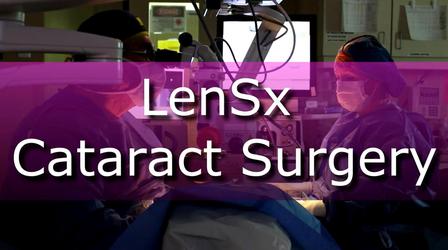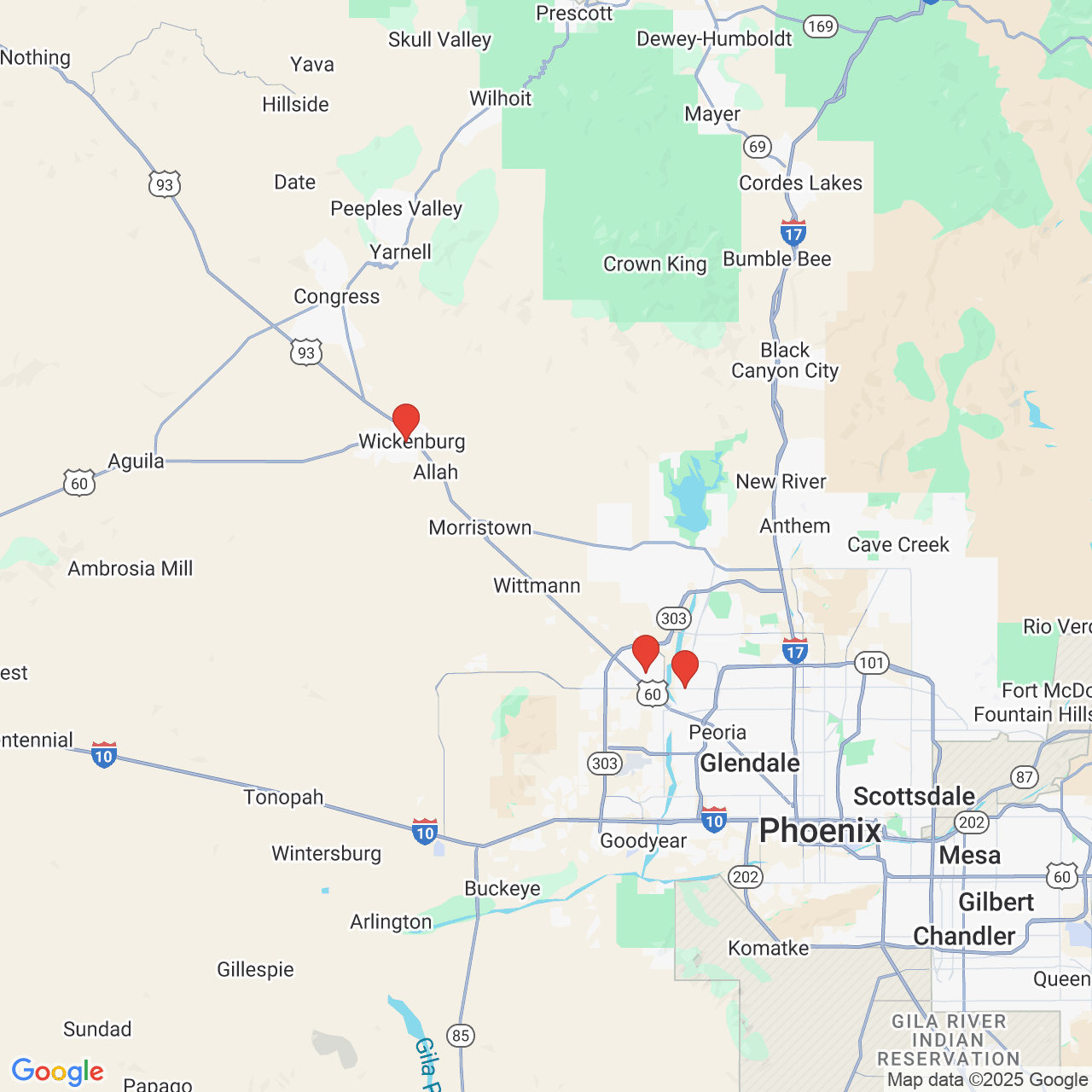At the Arizona Eye Institute & Cosmetic Laser Center in Phoenix, AZ, we believe you deserve the very best in care. To provide the safest, most precise laser eye surgery and cosmetic surgery possible, we use a range of state-of-the-art surgical technology.
Ready to find out more about our cutting-edge treatment?
The Life-Changing Benefits of Our Advanced Surgical Technology
/https://d1l9wtg77iuzz5.cloudfront.net/assets/2444/255669/original.jpg?1549394791&fit=crop)
Greater Precision
Our surgical tools make every stage of your laser eye surgery more precise. From our eye mapping ability using the ORA™ system to the incredible accuracy of our lasers, you can feel confident in the results of your procedure.
/https://d3b3by4navws1f.cloudfront.net/shutterstock_75793477-1.jpg?fit=crop)
Better Correction
In some cases, laser-assisted surgery can provide a greater degree of correction for refractive errors such as astigmatism, allowing you to enjoy an improved quality of life after your procedure.
/https://d3b3by4navws1f.cloudfront.net/shutterstock_321335750.jpg?fit=crop)
Less Discomfort
For many patients, laser-assisted eye surgery is more comfortable than conventional methods. The precision and consistency of these advanced tools can also mean a quicker procedure, allowing you to return to your daily life sooner.
We use advanced technology at every stage of cataract surgery...

How Our Different Technologies Work
LenSx® Laser
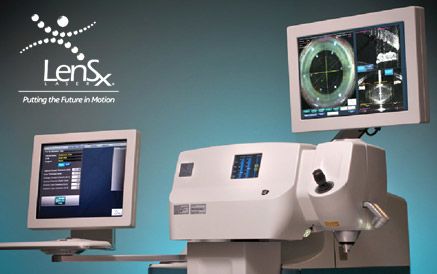
The LenSx® Laser is the first femtosecond laser (a laser that delivers many pulses of laser light per second) to be cleared by the Food and Drug Administration for use in cataract surgery. It is used to create corneal incisions and fragment the clouded lens. It can also be used to concurrently treat astigmatism.
ORA® System
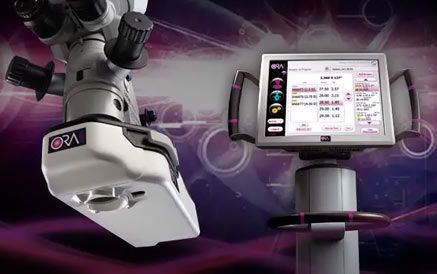
Used during cataract surgery, the ORA® technology aids in confirming and selecting the appropriate IOL power, diagnosing and managing astigmatism (which can be corrected using a premium toric IOL), and aligning the IOL during placement. Repeat measurements can be taken until the desired outcome is achieved, and the surgery can be customized to an exacting degree.
Argon Laser
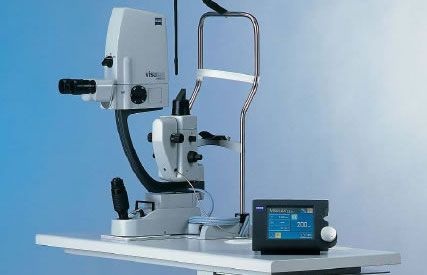
The Argon laser is used during laser eye surgery procedures. Laser surgery with the Argon laser has several advantages, including a minimized risk of infection and the ability to perform the procedure in an outpatient setting. This laser gives the surgeon greater precision and control during the surgery.
YAG Laser
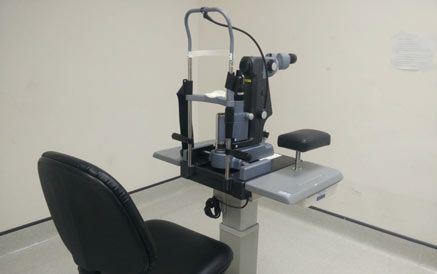
The YAG Laser is also used during IOL placement following cataract removal. Our YAG laser capsulotomy usually takes less than one minute to perform, and is a quick, painless procedure. It requires only topical (eyedrop) anesthesia.
CO2 Laser

We use a carbon dioxide laser to perform laser eyelid surgery, a less invasive alternative to traditional eyelid surgery. During the procedure, your surgeon removes excess skin and fatty tissue that blocks your field of vision and makes you look older. Patients who are considering eyelid surgery prefer the CO2 laser approach because it eliminates the need for scalpels, it is more precise than traditional methods, and it has a quicker recovery time than traditional eyelid surgery.
Here's what you can expect during laser eyelid surgery...
The Laser Eyelid Surgery Process
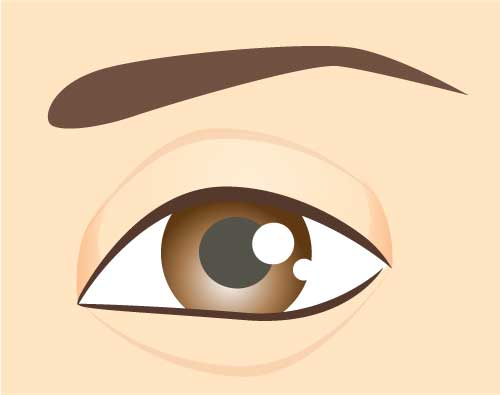
Consultation
Dr. Emilio Justo will review your concerns and determine whether laser surgery is the best option for you.
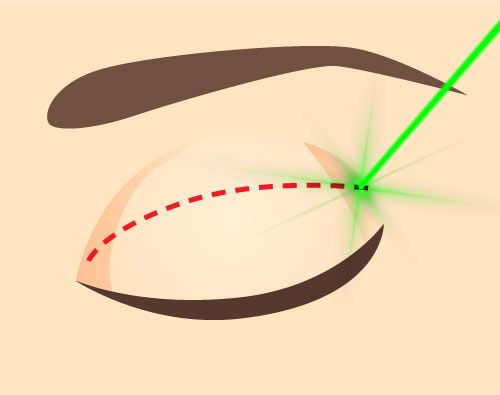
Incisions
Using the CO2 laser, Dr. Justo will create tiny incisions along the creases of your eyelid or inside of your eyelid.

Procedure
He will then remove excess tissue in the upper and lower eyelids. Incisions will be closed in a way that results in tighter, rejuvenated eyelids and a clearer field of vision.
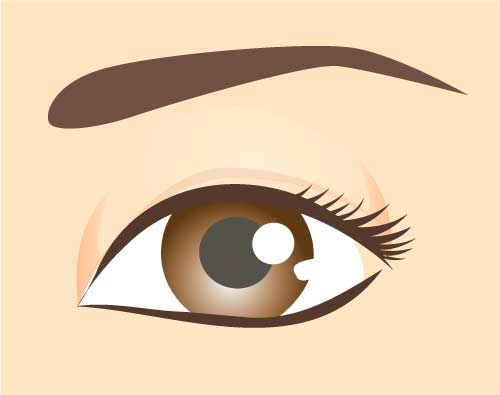
Recovery
Because the laser also seals blood vessels during the process, there is minimal bleeding. Patients can enjoy a much quicker and more comfortable recovery compared to traditional eyelid surgery.
Watch our advanced approach in action...
Laser Eyelid Surgery
Channel 3 Features Dr. Justo's Laser Cataract Surgery
What is the LenSx® Laser?
The LenSx® Laser is a sophisticated surgical tool that makes cataract surgery safer and more effective than ever before. Cataracts occur when the crystalline lens, which lies behind the cornea, becomes clouded, obstructing vision. In the early stages of cataracts, clearer vision can be achieved using conservative treatments like eye drops and glasses. However, cataracts eventually become so severe that the crystalline lens must be surgically removed and replaced with a synthetic lens in order for a patient to see clearly.
I just never expected the surgery to have this kind of impact on my life.
Glenn Navis
The LenSx® Laser system implements a bladeless, computer-controlled laser to make extremely precise alterations to the eye's tissue. By enhancing control over the most important steps of cataract surgery, including the primary incision and breaking up the cataractous lens, the LenSx® Laser minimizes the risk in each step of the procedure. From the planning phase of treatment to the final surgical outcome, the LenSx® Laser combines a number of advanced technologies to streamline and improve treatment. Optical coherence tomography (OCT), for example, creates a detailed digital image of the eyes. This real-time visual aid allows the surgeon unparalleled control during the procedure. The LenSx® Laser also creates incisions that are five times more precise than handheld tools can create.
Read how Glenn found himself playing ball again after his Laser Cataract surgery.
Watch a Video of Laser Cataract Surgery
Many patients like to see Dr. Justo perform the surgery to learn more about his process, using the latest technology. Watch our brief educational video that includes scenes from an actual surgery, and a glimpse of the technology in action:
Treatment Benefits
We understand no two patient conditions are alike, and every treatment we provide is fully customized. LenSx® Laser allows microscopic differences in the size of a patient's eyes and the thickness and curvature of the cornea to be considered when planning treatment. Treatment using the LenSx® Laser can be customized to a greater degree than the majority of ophthalmic surgery tools available today.
Many who require cataract surgery also suffer with astigmatism, in condition in which vision is distorted because of an irregular shape of the cornea or the crystalline lens. The LenSx® Laser can be used to concurrently treat this common condition. Many of our patients who choose to receive an intraocular lens (IOL), like the AcrySof® IQ or Toric lenses, can attain even clearer corrected vision.
ORA® System
At Arizona Eye Institute & Cosmetic Laser Center, our practice combines experience, compassion, and technology to achieve optimal outcomes for our patients. To enhance precision and accuracy during cataract surgery, Dr. Justo uses the ORA® System.
What is ORA®-guided Surgery?
During cataract surgery, an intraocular lens (IOL) is used to replace the lens affected by cataracts. Selecting the appropriate IOL is based on a number of factors, including any pre-existing medical conditions, and the patient's vision enhancement goals. The decision regarding which type of IOL to place will be made during a visit to our Sun City, Sun City West, or Wickenburg office. The power, placement, and alignment of your IOL all affect your results. Optiwave refractive analysis (ORA®) allows Dr. Justo to fine-tune these factors for optimal surgical results.
Previously known as OptiPlus, the ORA® system uses a beam of low intensity laser light. During surgery, this beam is directed into the eye and bounces off the retina (the "screen" at the back of the eye that gathers visual information). Once the light is reflected back, sensors analyze the information to measure the eye's focusing capabilities.

Benefits of the System
Before the introduction of the ORA® system, surgeons were unable to measure the level of their patients' vision improvement for weeks after cataract surgery. Now, accurate analysis can be performed during the procedure.
The ORA® system provides:
- Exacting analysis of data regarding visual outcome
- Optimized selection of your implant's power
- Enhanced placement of the IOL
In short, the ORA® System uses optimized algorithms to provide real-time feedback during surgery. As a result, Dr. Justo can operate in a more precise, efficient way.
Leaders in the Field
Throughout his career, Dr. Justo has incorporated advanced technology to provide safer, more accurate treatment. Our practice is proud to be one of the first in the state to offer ORA®-guided cataract surgery. By passing on the advantages made possible by this exciting technology, we are able to further improve our patients' results after cataract surgery. Ultimately, these state-of-the-art technologies allow us to provide an even higher quality of care.
Argon Laser
The word “laser” stands for “Light Amplification by Stimulated Emission of Radiation”. A laser is a concentrated beam of light, created when an electric current passes through a special material. An Argon laser uses argon gas and is composed of blue-green light within the visible light spectrum.
An Argon laser is a thermal laser in which the laser light is converted to heat when it reaches the eye. This heat may then be used in various manners to treat the eye, such as:
- Seal blood vessels (veins and arteries) that are bleeding or leaking fluids (e.g. diabetic macular edema, proliferative diabetic retinopathy, hypertensive macroaneurysm, exudative macular degeneration)
- Destroy abnormal tissue such as a tumor
- Bond the retina to the back of the eye (e.g. retinal tear or hole)
- Open the eye’s filtration system for glaucoma treatment (e.g. argon laser trabeculoplasty)
- Create an opening in the iris for treatment of narrow angle glaucoma (e.g. argon laser iridotomy)
YAG Laser
We offer a range of laser eye surgery options at our Phoenix-area practice, the Arizona Eye Institute & Cosmetic Laser Center. One such laser treatment is the YAG laser, which can be utilized to treat cataracts. "YAG" is an acronym for "yttrium-aluminum-garnet" and a YAG laser is composed of invisible infrared light. In general, the word "laser" stands for "Light Amplification by Stimulated Emission of Radiation." A laser is a concentrated beam of light, created when an electric current passes through a special material. The YAG laser is a "photodisruptive" type of laser whereby the light cuts or sculpts the tissue, similar to a knife. This photodisruptive beam cuts thin membranes inside the eye that are blocking vision.
The most common ophthalmic procedure in which a YAG laser is used is known as a "posterior capsulotomy," which is a laser eye surgery procedure which is often necessary after cataract surgery. The posterior capsule which normally supports the intraocular lens implant following cataract surgery is normally clear. However, with the passage of time, this capsule can become cloudy or wrinkled, most commonly within 12 to 24 months after surgery. It acts much like a piece of cellophane, which is easy to see through when stretched tight, but which causes blurred vision when wrinkled or opacified. This wrinkling or cloudiness can interfere with vision in ways similar to the original cataract.
If the clouding of the posterior capsule interferes with vision, then laser eye surgery - a YAG laser capsulotomy - is recommended to make a small surgical opening in the capsule to again restore normal sight. It is not necessary to remove the entire capsule as it is left in place to support the IOL (lens implant), but a very small opening in the center of the capsule is made with the YAG laser to allow clear passage of light rays reaching the retina.
Learn More about Laser Eye Surgery Treatment Options
If you suffer from cataracts and are interested in learning more about your treatment options, including laser eye surgery, we can help. At our Phoenix-area eye care center, a team of professionals can discuss your options with you, diagnose your condition, and answer any questions you may have regarding treatment. We pride ourselves on delivering superb results for our patients and would be honored to have the opportunity to work with you. To schedule a consultation, contact the Arizona Eye Institute & Cosmetic Laser Center today!

